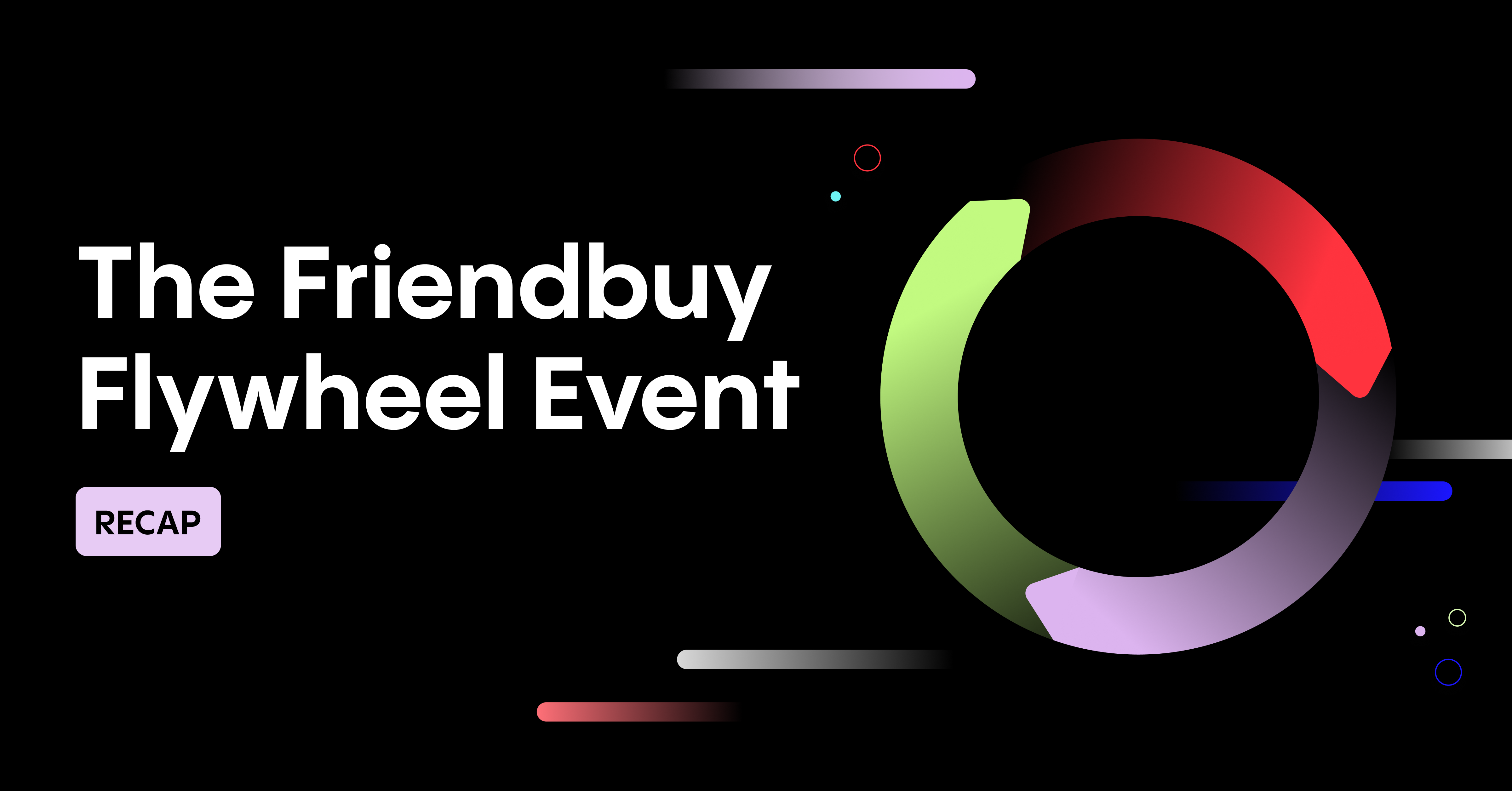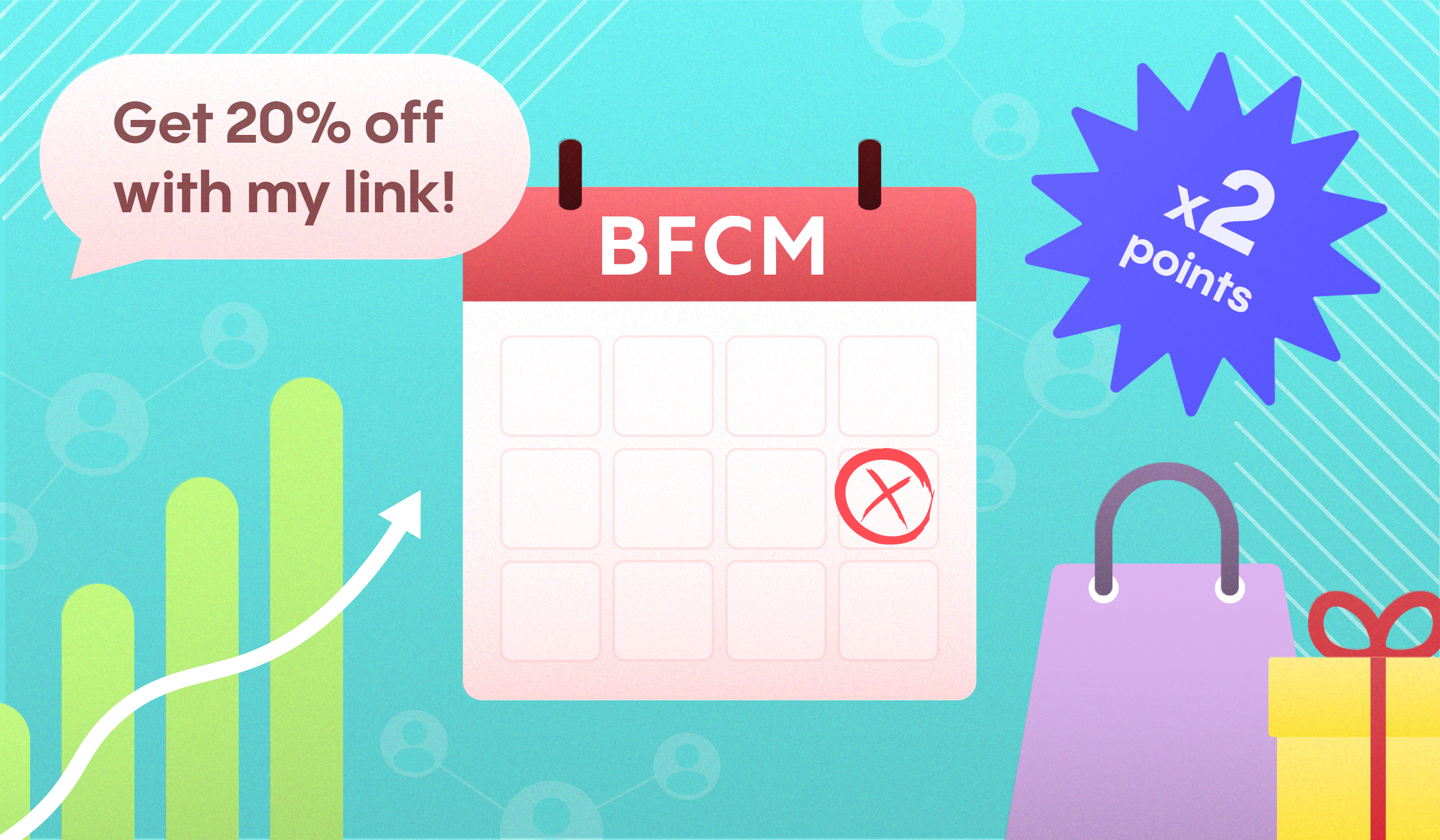Finding an endless stream of new and loyal customers is the dream for most businesses and we've got the referral marketing statistics to show you that the dream is indeed a reality for many brands.
But, solving that ever-changing puzzle to reach the most customers that best fit your unique business can sometimes feel a little like a dog chasing its tail.
With marketing specialists regularly publishing new statistics and trends shifting all the time, it can be hard to keep up. However, one marketing channel that consistently brings in new customers and remains effective? Referrals and word of mouth recommendations.
While marketing statistics often change, the stats on referral marketing don't lie and they tell an impressive story of serious results. In this post, we've collected the latest and greatest statistics about referral marketing to tell that story.
How Referral Programs Are Making Businesses More Money
As they say, show me the money! So let's start by covering the referral marketing statistics that show real-life examples of businesses making more money from referral programs.

- After partnering with Friendbuy, Get Back Necklaces saw a 320% increase in referral revenue.
- Thinx saw 114% referral revenue growth year-over-year in the first year of using Friendbuy's Shopify Plus referral integration.
- Friendbuy's referral program drives up to 7% of Tonal's online revenue.
- Natural Dog Company has found that Advocates from their Friendbuy referral program have a 20% higher AOV than non-referral customers.
Referral Marketing Statistics That Prove The Insanely High ROI Of Your Referral Program
Hold onto your computer screens folks because these referral marketing statistics might just blow you away.
Ready?
The mattress company Casper saw had a 7x greater ROI on its referral marketing program than the company's average marketing endeavors. Casper's referral program is by far one of the most efficient customer acquisition channels in their arsenal.
While Casper's example is one of fairly extreme proportions, it's not abnormal. Your very own referral marketing program can unleash equally high ROIs with the right marketing efforts and support.
Referral marketing can offer a 25x return on spend. Depending on the vertical, referral marketing programs offer an average ROI from 18x to 47x. Check out these industry-specific average ROI statistics:
- Apparel and Accessories, CPG/Essentials: 25x
- Health and Beauty: 22x
- Subscription: 18x
- High Consideration/Luxury: 47x
Why is referral marketing so profitable? Let’s hash out some of the reasons below.
People are talking about brands (brand mentions)
When people talk about a brand, it helps increase the brand's visibility and awareness. This is especially true when the conversations are positive and create buzz around the brand.
According to Adweek, 2.4 billion brand-related conversations happen in the U.S. everyday. That's a whole lot of opportunity for word of mouth marketing and word of mouth recommendations. Referral marketing feeds into brand discussions and brand awareness.
- Consumers mention 56 brands in conversation per week [Deloitte]
- One in three people come to a brand through a recommendation [Deloitte]
Consumers trust referrals from people they know
In person or online, consumers trust people they know more than paid advertisements or paid media. It makes sense — people trust their friends and family. But there are also real numbers to back it up.
- 77% of consumers are more likely to buy a new product when learning about it from friends or family [Nielsen]
- 92% of consumers around the world say they trust earned media, such as word-of-mouth or recommendations from friends and family, above all other forms of advertising [Nielsen]
- 14% of European smartphone owners have used their devices to text or talk to family or friends about a product while in a store [ComScore]
- 89% trust recommendations from people they know the most [Nielsen]
Referral campaigns and programs bring more customers than traditional marketing channels
Referral campaigns and programs can have the most influential role in consumers' purchasing decisions. Here are some statistics that demonstrate this:
- Five to 15% of new customers are acquired through a referral program
- Byte’s referral transactions doubled year-over-year and is one of their top-performing channels.
- Friendbuy’s top-performing customers have achieved up to 30% of revenues by A/B testing referral offers and optimizing the creative elements of their referral programs.
- Word of mouth marketing is the primary factor behind 20-50% of all purchasing decisions [McKinsey]
- Friend referrals are the most successful marketing tool used by US small businesses [eMarketer]

Customer referrals are a key factor to the B2B buying process
The B2B buying process has several different stages. Depending on where you mark the beginning of your B2B buyer's journey, a referral may be at the very start. After the initial need or problem, many B2B companies say they'll start with a referral. While there are some contrasting statistics when it comes to the exact role referrals play in the B2B buying process, it's no doubt that word of mouth recommendations are important.
- 91% of B2B purchasers said that their buying decisions were influenced by word of mouth [Reuters Events Marketing]
- 84% of B2B decision makers start the buying process with a referral [Influitive]
- 86% of companies with formalized referral programs experienced revenue growth over the last two years, compared to 75% without referral programs [Influitive]
Referrals And Conversion Stats
When it comes to cold hard conversions, referral leads are gold. Between social media referrals, high referral-based conversion rates, and a lower cost per acquisition (CPA) the stats don't lie. These customer referral marketing statistics show the conversion numbers for what referrals can do for your bottom line.
Social media referrals influence US shoppers’ purchase decisions more than traditional advertising
Social media has become an increasingly important channel for businesses to reach and engage with consumers. With influencers, friend referrals over social media, and social media online reviews, social networks are essential to any referral marketing strategy. Here are some statistics that demonstrate the impact of social media referrals on purchase decisions compared to traditional advertising:
- In 2021, $37 billion in goods and services were purchased through social-commerce channels. [McKinsey]
- 81% of US respondents indicated posts from their friends directly influenced their purchase decision [Market Force]
- 30% of respondents in the Nielsen Global Survey of New Product Purchase Sentiment said they were much more or somewhat likely to purchase a new product after learning about it through social media [Nielsen]
Referral-based conversion rates are higher than organic conversion rates
A referred customer has higher and quicker referral rates than organic customers from other channels. When a customer is referred to a business by someone they know and trust, they are more likely to be interested in the product or service. These are already pre-qualified leads that are more likely to want your product and they've already heard positive reviews from people they trust. Plus, that referral-based sale is going to be way more personalized than any paid advertisement you could make because it's coming from someone they know.
- Customers referred by a friend convert five times faster than those acquired through other channels
- Recommendations from people the consumer knows and solicited emails are almost 2x more likely to generate action [Nielsen]
- The average conversion rate for B2B referrals is 11% and is the highest compared to other marketing channels [99Firms]

Referral marketing can increase your profits quickly (Plus have a lower CPA)
We all like instant gratification and quick results for higher profits. Statistics show that referral marketing can do just that. Along with the previous statistic that referred customers convert five times faster than non referred customers, those conversions also don't cost as much.
- Most Friendbuy referral program partners hover around the $3 CPA mark.
By category, here are the CPAs that Friendbuy’s customers are achieving:
- Apparel and Accessories: $1-10
- Essentials: $1-9
- Health and Beauty: $1-6
- Subscription: $1-11
- High Consideration: $1-14

Referrals And Retention Statistics
Referrals and loyalty go together. When you reward satisfied customers for talking about their good experience and bringing in other customers, they'll want to stick around. Plus, if two friends are talking about your brand and making purchases, it creates a positive cycle of repeat business. These are the numbers that prove it.
Referred customers have a lower churn than customers acquired by other marketing channels
Loyal customers are the best customers. In the current market with tons of options, consumers are switching things up and trying different products more than ever. However, referred customers statistically stick around longer.
- Customers referred by other customers have a 37% higher retention rate [Deloitte]
- A case study on a German bank found that the speed at which referred customers churn and leave the bank was on average about 18 % lower than that of other customers [Wharton School of the University of Pennsylvania]
Referred customers and customers who refer have a higher lifetime value (LTV) than customers who don't participate in referral programs
Hand-in-hand with lower churn and retention is LTV. LTV can change by increasing average order value (AOV) or having more purchases over time. In terms of referral marketing, it can do both. Referral programs build a relationship with your existing customers by rewarding them for being brand advocates and further drives repeat purchases for a higher LTV.
- For Get Back Necklaces, their AOV from referred customers is approximately 25% higher than the AOV of non-referral orders
- In general, referral marketing achieves a 5x greater lifetime value (LTV) than other channels
- The LTV of referred customers in the German bank case study was 16 % higher than that of non-referred customers [Wharton School of the University of Pennsylvania]
People are ready and willing to share if you have a CTA button on your post-purchase page
As they say — ask and you shall receive. Happy customers are often more than willing to share their experience and make referrals, but they're far less likely to do so if you don't ask. In this case, that means including a clear call-to-action (CTA) button on your post-purchase page. This can encourage customers to share their purchase on social media, leading to increased brand exposure and potential new customers.
- 24% of referral revenue on Friendbuy comes from a post-purchase overlay.
- 83% of customers are willing to refer after a positive shopping experience [Extole]
- Customers are 16x more likely to share a referral if there is a call to action on the post-purchase page [Extole]
However, don't limit yourself to just the post-purchase page. In fact, if you only run a post-purchase widget, you're missing 95 percent or more of potential brand advocates. Weaving in referral CTAs throughout your website and other areas of your customer journey can make a big difference. The key here is you want to make it easy for your potential brand advocates to share with friends and family.
Here's what our experience has told us performs best:
- A primary referral CTA ‘above the fold’ on desktop has a 13% share rate, 14% conversion rate and makes up 45% of overall referral revenue
- When Friendbuy clients added a primary referral CTA on the hamburger menu on mobile, shares increased by 75%, conversions increased by 81%, and total referral revenue increased by 73%
- Including a referral program CTA on the customer's account page has a 10% share rate, 6% conversion rate, and is 36% of total referral revenue

What Makes Customers Share Your Referral Program? Here's What Our Data Tells Us.
With all this talk about the benefits of referral programs, keep in mind it's not all a cake walk — there’s finesse to making a killer referral program. While each referral setup should be unique to your target audience, we've pulled some specific data that can give you a head start for creating the best referral program.
The type of referral incentives and rewards matter
- More than 50% of respondents are more likely to give a referral if offered a direct incentive, social recognition or access to an exclusive loyalty program [Invesp]
- Rewards are important for increasing referral likelihood between casual acquaintances [American Marketing Association]
- One study shows referrals with friend incentives are more effective than advocate incentive referrals because it offers reputational benefits to the advocate while directly incentivizing the friend to sign up [Washington University in St. Louis]
- Using a seasonal campaign with a free gift, Birchbox doubled the number of users who clicked on the shared content AND doubled referral purchases
- Dr. Squatch discovered their customers preferred a free product instead of $10 credit in their double-sided incentive program
- Naturebox lifted their sharing rate to 48.7% with the language “Get $10 for Free!” instead of 50% off product — even though the monetary value was the same
- Spanx used stackable credits to double the size of their referral program
Summary
While most marketing experts see referral marketing as a high-value acquisition channel, many businesses are not getting the most out of their potential brand advocates.
And when that happens? It’s a lose-lose for everyone. Brands miss out on higher LTV customers, improved loyalty, and new, high-converting customers; current customers miss out on extra rewards and improved social standing; and friends miss out on a product that could benefit them.
Make the most of your referral marketing potential with Friendbuy’s help.










.avif)

